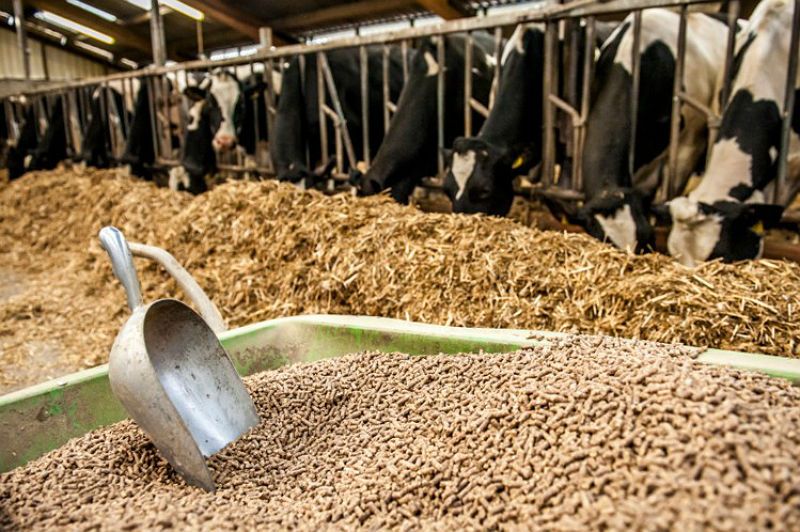Middle East posts jump in global feed production: Alltech

Feed production in the Middle East region increased by 6.3 million tonnes (Mt) in 2022 but dropped 12.9Mt in Europe, according to survey data released yesterday in the 2023 Alltech Agri-Food Outlook.
The annual survey includes data from 142 countries and more than 28,000 feedmills, and put global feed production in 2022 at 1.266 billion tonnes, down a modest 0.42pc from 2021’s estimates.
Alltech said this was despite significant macroeconomic challenges that affected the entire supply chain.
“Europe bore the brunt of the impact, including significant disease challenges, severe weather and the impacts of the invasion of Ukraine,” the report said.
“The global COVID-19 pandemic has had major impacts on the agrifood sector, contributing to supply-chain challenges and accelerating the adoption of new technology and environmental sustainability practices.
Middle East feed production was up 24.7pc on the 2021 figure, which Alltech said reflected more accurate reporting and efforts by the Saudi Arabian Government to increase broiler production as part of its Vision 2030 plan.
Europe saw the largest decrease in feed production of 4.7pc in its feed production due to issues that include the invasion in Ukraine and the spread of animal diseases, such as African swine fever and avian influenza.
The top 10 feed-producing countries over the past year were: China 260.7Mt; US 240.4Mt; Brazil 81.9Mt; India 43.4Mt; Mexico 40.1Mt; Russia 34.1Mt; Spain 31.2Mt; Vietnam 26.7Mt; Argentina 25.7Mt, and Germany 24.4Mt.
Together, the top 10 countries produced 64pc of the world’s feed production, with half of the world’s feed consumption concentrated in four countries: China; US; Brazil, and India.
“Vietnam experienced a great recovery in terms of its feed tonnage in 2022, entering the top 10 ahead of Argentina and Germany and crowding out Turkey, which reported reduced feed tonnage.
Russia overtook Spain, where there was a significant reduction in feed production.
Across the regions, Africa experienced a decrease of 3.9pc, or 1.7Mt, mainly because of reductions reported in Egypt, Morocco, Kenya and Nigeria, while South Africa saw an increase of more than 2pc, and Namibia also reported higher feed tonnage in 2022.
North America reported an increase of 0.9pc, or 2.3Mt, with growth reported in the broiler, beef and pet-food sectors.
Latin America experienced growth of 1.6pc, or 3Mt, with most of the growth reported by Mexico, Brazil and Chile.
Asia-Pacific production eased 0.5pc, with increases in Vietnam, The Philippines, Mongolia and South Korea not enough to offset drops in China, Pakistan, Thailand and Malaysia.
An increase for New Zealand outweighed a small reduction reported for Australia to see Oceania production firm 0.3pc.
Globally, increases in feed tonnage were reported in the aquaculture, broiler, layer and pet food sectors, while decreases were reported in the beef, dairy and pig sectors.
Pig feed production was down globally in 2022 by almost 3pc, with ASF and high feed prices depressed pig production in many countries.
However, in Vietnam, China, South Africa, Brazil and Mexico, better pork prices and other market conditions led to growth in the sector.
Dairy feed tonnage decreased by 1.3pc, mainly due to the high cost of feed combined with low milk prices, which caused farmers to reduce their numbers of cows and/or rely more on non-commercial feed sources.
Some exceptions included Ireland, where drought caused farmers to rely more on commercial feeds, and New Zealand, where milk prices were higher.
Beef feed production eased 0.3pc globally, where the downward trend continued in Europe, but increases were seen in almost all other regions.
In Australia, the reduction in feed tonnage was a result of ample grazing and fodder reserves rather than altered demand for beef.
The poultry sector experienced increases in both layer and broiler feed production.
Diseases including avian influenza and the high costs of raw materials affected the sector in many markets, especially in Asia, Europe and Africa.
On the other hand, growth in the sector was boosted due to bigger challenges in other sectors that led to increased demand for eggs.
Overall, layer-sector feed production increased by 0.3pc.
Read also
Wheat in Southern Brazil Impacted by Dry Weather and Frosts
Oilseed Industry. Leaders and Strategies in the Times of a Great Change
Black Sea & Danube Region: Oilseed and Vegoil Markets Within Ongoing Transfor...
Serbia. The drought will cause extremely high losses for farmers this year
2023/24 Safrinha Corn in Brazil 91% Harvested
Write to us
Our manager will contact you soon



